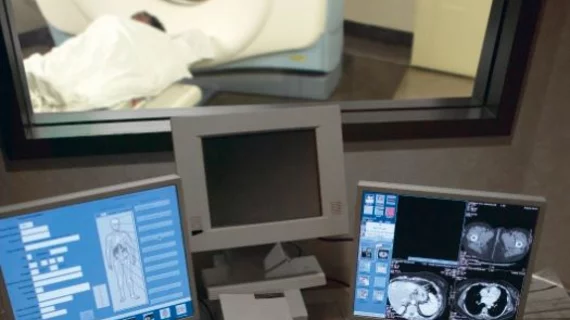Research advocates for the return of positive oral contrast in abdominopelvic CT exams
The American Journal of Roentgenology recently shared research that demonstrates the effectiveness of positive oral contrast material for detecting malignant deposits on CT scans.
The study compared the efficacy of both positive and neutral oral contrast material for identifying malignancy in nonsolid intraabdominal organs on CT, which can be challenging due to variations in the appearance of bowel and the complex anatomy of the abdominal cavity.
Contrast materials help differentiate between the bowels and other structures and have been used routinely for many years. But some studies have suggested that their administration is unnecessary in certain settings, citing delays in time-to-diagnosis. These studies mostly pertained to emergency situations and suggested using a neutral agent, such as water, or foregoing oral contrast all together to speed up the triage process. This has some experts concerned that the elimination of positive oral contrast could sacrifice valuable diagnostic information that is critical for oncology patients.
“There is a paucity of published data comparing positive versus neutral or no oral contrast material specifically for the detection of tumors in the abdominal cavity,” corresponding author Benjamin M. Yeh, MD, of the Department of Radiology and Biomedical Imaging at the University of California, San Francisco, and co-authors said. “Potentially related to the paucity of supporting data, the usage of positive oral contrast material for CT has rapidly diminished, including for oncology patients, in whom tumor detection is critical.”
Experts sought to fill in this research void by comparing the use of positive versus neutral oral contrast material for identifying malignant deposits in nonsolid organs within the abdominal cavity. To achieve this, they retrospectively analyzed 265 CT scans where malignancy was not indicated on initial radiology reports but for which follow-up imaging (within six months) did reveal at least one unequivocal malignant deposit. Either positive or neutral oral contrast was used in every exam.
Malignant deposits were detected by an unblinded radiologist in 58% of examinations. Exams that used positive oral contrast material and displayed adequate bowel filling observed higher negative predictive value (NPV) for malignant deposits than the scans that incorporated a neutral material, regardless of bowel filling. This was consistent across both per-patient and per-compartment analyses.
Out of 154 detected malignant deposits, 12 resulted in aborted surgeries or disease progression into other organs, which further highlights the need to improve CT detection of such findings, the researchers suggested.
“While the use of oral contrast material involves additional cost and the need for the patient to drink the agent, the accurate staging and early detection of metastatic tumor spread is critically important,” the authors wrote. “The use of positive oral contrast material improved the detection of malignant deposits in intraabdominal nonsolid organs. These findings have implications for optimizing CT protocols in oncologic patients to help avoid the potentially severe clinical consequences of missed malignant deposits.”
More on contrast media:
Simple, proven strategies to reduce extravasation of contrast media during CT scans
Warming up CT contrast agents raises radiology department costs and few clinical benefits
Delayed-phase contrast-CT scans can help detect early pancreatic cancers, study shows
Fewer than 2% of patients know which imaging contrast caused their allergic reaction

